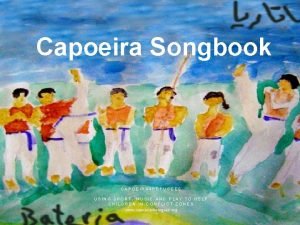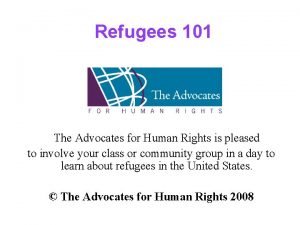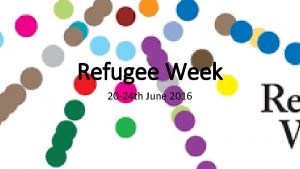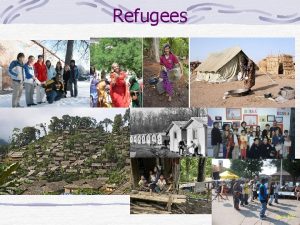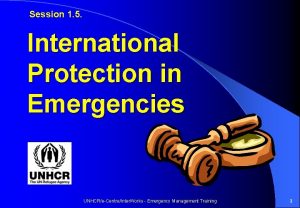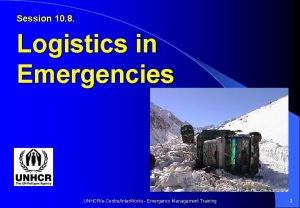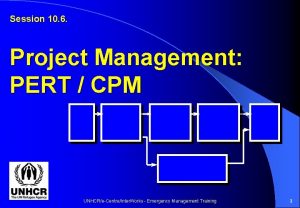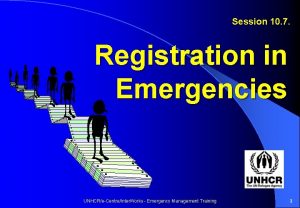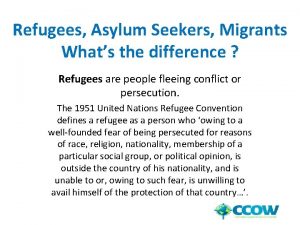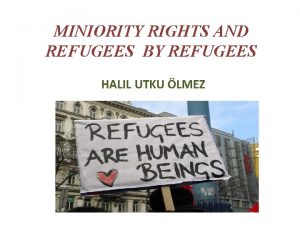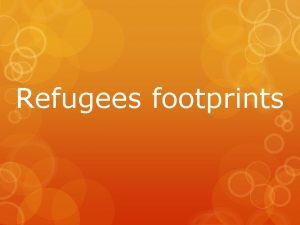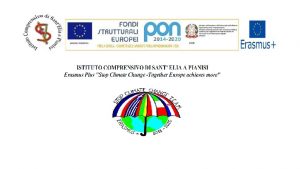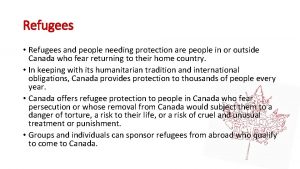Session 10 1 Who Are the Refugees UNHCReCentreInter











- Slides: 11

Session 10. 1. Who Are the Refugees? UNHCR/e-Centre/Inter. Works - Emergency Management Training 1

Session Objectives: l Put a “human face” on the refugee population l Overcome the common phenomenon of treating the displacement in gross numbers only without considering the sub-group characteristics of the refugees UNHCR/e-Centre/Inter. Works - Emergency Management Training 2

Basis of People-Oriented Approach: Two Basic Facts 1. All refugees are not the same and any single refugee group is not homogeneous. whoare 2. Refugees are people with strengths and capacities on which to build emergency programming responses. Inter. Works/UNHCR 3

What are the critical demographic differences? GENDER AGE FAMILY STATUS UNHCR/e-Centre/Inter. Works - Emergency Management Training 4

What has CHANGED as a result of this displacement? § § § DEPARTURE FLIGHT ARRIVAL ASYLUM DURABLE SOLUTION? UNHCR/e-Centre/Inter. Works - Emergency Management Training 5

Who does what now? Who is in control now? § What did people do before and what do they do now? ? § Who controlled and now controls resources? ? § What determined societal roles and what determines them now? ? UNHCR/e-Centre/Inter. Works - Emergency Management Training 6

People -Oriented-Planning Framework Three Steps 1. Context and Refugee Profile 2. Activities Analysis 3. Analysis of Use and Control of Resources UNHCR/e-Centre/Inter. Works - Emergency Management Training 7

STEP ONE CONTEXT AND REFUGEE PROFILE Traditions & Beliefs Institutional Structures Economic Conditions Demographics Attitudes Political Events Legal Parameters UNHCR/e-Centre/Inter. Works - Emergency Management Training 8

STEP TWO ACTIVITIES ANALYSIS What Who Where and When ? UNHCR/e-Centre/Inter. Works - Emergency Management Training 9

STEP THREE ANALYSIS OF USE AND CONTROL OF RESOURCES What was lost? What was brought? What is provided? UNHCR/e-Centre/Inter. Works - Emergency Management Training 10

Conclusion: For effective programming. . . Learn their story… So you can build on their capacities Question your own assumptions! Photo Credit: UNHCR/e-Centre/Inter. Works - Emergency Management Training 11


